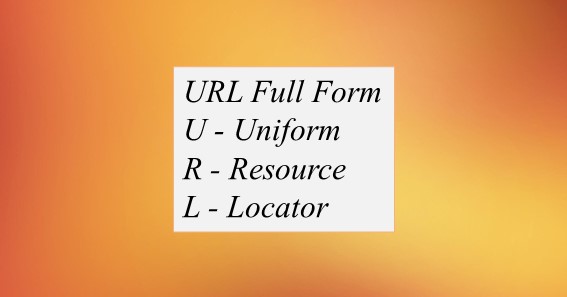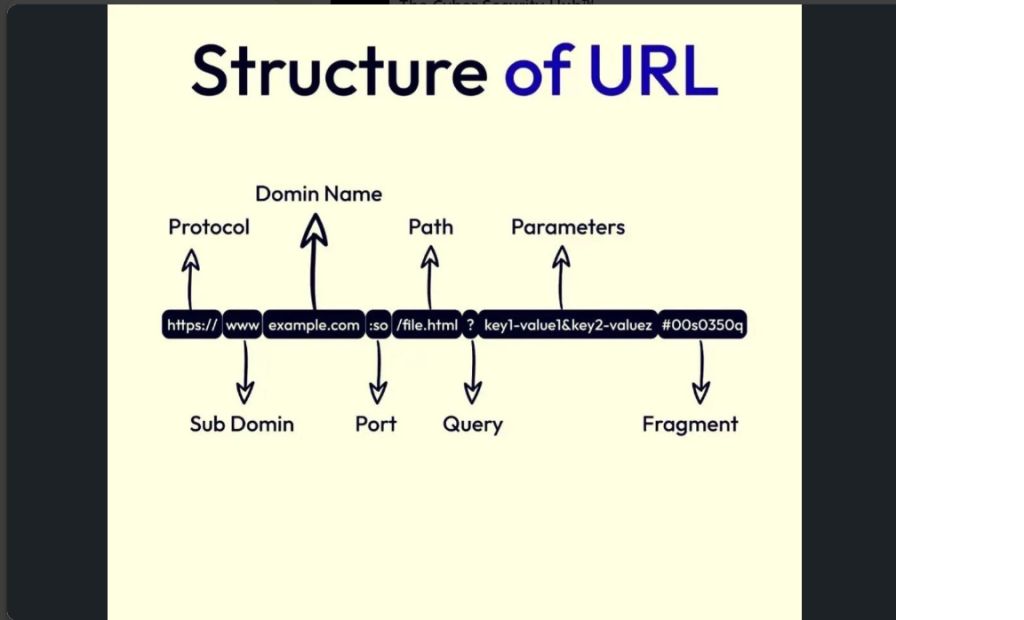
A Uniform Resource Locator, commonly known as a URL, is a reference or address used to access resources on the internet. It serves as a standardized way to locate and retrieve various types of information, such as web pages, files, or services. Comprising distinct components like the protocol, domain name, and path, facilitate the organization and accessibility of online content, playing a crucial role in the seamless navigation of the World Wide Web.

Table of Contents
What is URL?
A Uniform Resource Locator serves as the address for identifying and locating resources on the internet. It specifies the means to access a resource, such as a webpage or file, and typically consists of various components like the protocol (e.g., “http” or “https”), the domain name, and the specific path or resource name. URLs play a fundamental role in enabling the navigation and retrieval of information across the World Wide Web.

Structure of Uniform Resource Locator
It consists of several components that collectively define its structure. These components include:

Scheme/Protocol: This indicates the protocol used to access the resource. Common examples include “http,” “https,” “ftp,” etc.
Domain: The domain name identifies the specific location on the internet where the resource is hosted. It can be further divided into subdomains.
Path: The path specifies the location of a specific resource on the server. It helps navigate within the website or web application.
Query Parameters: These parameters provide additional information to the server about the requested resource. They are separated from the URL by a question mark “?” and can include key-value pairs.
Fragment/Anchor: The fragment or anchor is used to specify a particular section within the resource, especially relevant for HTML documents. It is preceded by a hash symbol “#”.
Syntax of Uniform Resource Locator
The syntax (Uniform Resource Locator) follows a specific format, consisting of various components. Here is a breakdown of the typical syntax:
scheme://username:password@domain:port/path?query_parameters#fragment
Scheme: Indicates the protocol used to access the resource (e.g., “http,” “https,” “ftp”).

Username and Password: Optional components for authentication. Not commonly used and often omitted.
Domain: Specifies the domain name (e.g., www.example.com).
Port: Optional and indicates the specific port on the server. If not specified, it defaults to the standard port for the given scheme (e.g., 80 for HTTP, 443 for HTTPS).
Path: Specifies the location of the resource on the server.
Query Parameters: Optional and used to pass information to the server. Separated from the URL by a question mark and may include multiple key-value pairs.
Fragment/Anchor: Optional and identifies a specific section within the resource, often used for navigating within documents. It is preceded by a hash symbol.
Here’s an example URL:
https://www.orissawebhosting.in:2087/path/to/resource?name=value&lang=en#section1
In this example:
Scheme: “https”
Domain: “www.orissawebhosting.in”
Port: “2087”
Path: “/path/to/resource”
Query Parameters: “name=value&lang=en”
Fragment: “section1”
It’s important to note that not all components are mandatory, and URLs may vary based on the specific requirements and conventions of the resource being addressed.
Types of Uniform Resource Locator
There are various types, each serving specific purposes and addressing different types of resources on the internet. Here are some common types:
HTTP (Hypertext Transfer Protocol):
Example: http://www.example.com
Used for accessing web pages and resources over the internet.
HTTPS (Hypertext Transfer Protocol Secure):
Example: https://www.example.com
Similar to HTTP but with added security through encryption (SSL/TLS).
FTP (File Transfer Protocol):
Example: ftp://ftp.example.com
Used for transferring files between computers on a network.
File URLs:
Example: file:///path/to/local/file.txt
Points to a file on the local file system.
Mailto URLs:
Example: mailto:user@example.com
Initiates the default email client to compose a new message to the specified email address.
Tel URLs:
Example: tel:+123456789
Initiates a phone call when clicked on a mobile device.
Data URLs:
Example: data:text/plain;base64,SGVsbG8gV29ybGQ=
Embeds data directly into web pages, often used for small images or inline resources.
JavaScript URLs:
Example: javascript:void(0);
Executes a JavaScript code snippet, often used for small actions on web pages.
URNs (Uniform Resource Names):
Example: urn:isbn:0451450523
Identifies resources by name rather than by location.
Custom Scheme URLs:
Example: app://open
Used for custom applications or protocols.
Its cover a broad range of functionalities and are utilized in different contexts across the internet. Each type adheres to a specific syntax and is designed to handle particular types of resources or actions.
Conclusion
Its support diverse types, ranging from standard web protocols like HTTP and HTTPS to specialized schemes such as FTP, mailto, and custom protocols tailored for specific applications. In essence, the importance lies in their capacity to organize and unify the vast expanse of digital information, making the internet accessible and navigable for users worldwide. As a foundational element of web architecture, exemplify the interconnected nature of the online ecosystem, where every click represents a journey to a unique digital destination.





